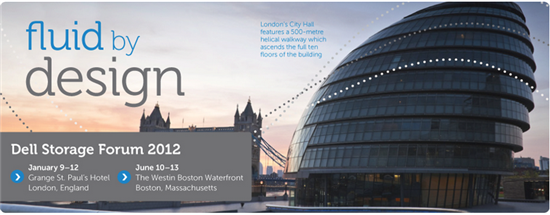Today’s world has become increasingly unpredictable, driven in part by the pace of data growth and our need to not only react to the increase in available information, but use that information to drive business results. Technology itself is in a constant state of change but despite this, data center professionals remain unsatisfied with legacy storage systems.
IT professionals are frustrated with the rigid boundaries of their existing storage, with the inability to rapidly respond to the changing demands of their organization. I hear those sentiments echoed all the time by customers who say that legacy storage is “hard to manage, rigid, too structured, inflexible.”
By combining today’s storage challenges with a vision for the future, Dell established a new direction on data storage. Dell saw an opportunity to address pain points in a unique and different way, starting fresh without any legacy IP and delivering a solution built around what customers truly want — storage that is designed to help IT shift from operation to innovation with the ability to continually adapt to change.
From this simple revelation came what we call the Fluid Data architecture. Fluid Data was designed from the inside out to deal with a world that has become increasingly unpredictable and to help IT organizations deal with data centers where the only real constant is change.
Based on best of breed technologies designed in the last decade, including industry-leading de-duplication and compression algorithms, a patented high performance highly scalable file system, world-class virtualization and embedded system intelligence, the Fluid Data architecture allows for storage that’s dynamic in nature. It’s an architecture designed to automatically seek your best interests with core technologies that embed intelligent movement and management of data into your system, offer policy-based rules that put choice into your hands, and deliver an open, flexible platform that puts future growth within your reach without a forklift upgrade.
The architecture is supported by strong design tenets that create shared values across the portfolio and enable an end to end offering with a consistent set of Dell Storage characteristics. Enabled by technologies that redefine the nature of the modern data center, a Fluid Data architecture can transform IT from a rigid cost center to a flexible productivity center.
At Dell, we have a purposeful plan for the future of storage and it’s fluid by design. That’s how things work in the outside world, so why shouldn’t everything function that same way inside your storage?
That’s why we selected fluid by design as our theme for Dell Storage Forum 2012. As our theme, fluid by design showcases the innovation of our architecture by highlighting the differentiated technology under the hood (or the boot for our friends in London), the engineered capabilities on the inside that make things fluid on the outside.
And because we have two cool destination cities on the docket in 2012 for Dell Storage Forum – London in January and Boston in June, the theme visuals tie to each location. Take the London City Hall for example. It has an amazing 500-metre helical walkway that circles and wraps to ascend the full ten floors of the building. That’s pretty fluid, but it had to start with a detailed blueprint based on key design tenets. Or the London Eye. It’s the world’s tallest “cantilevered observation wheel.” There’s definitely some embedded intelligence and automation in that architecture that makes for a smooth, fluid and fun ride in the real world.
Our first Dell Storage Forum event in 2012 takes place in London, January 9-12. From executive access and engineering-led demos to networking events and no-limits hands on labs, we’ve designed the event to be as dynamic as our storage portfolio. It will be all fluid, all the time – fluid by design.

